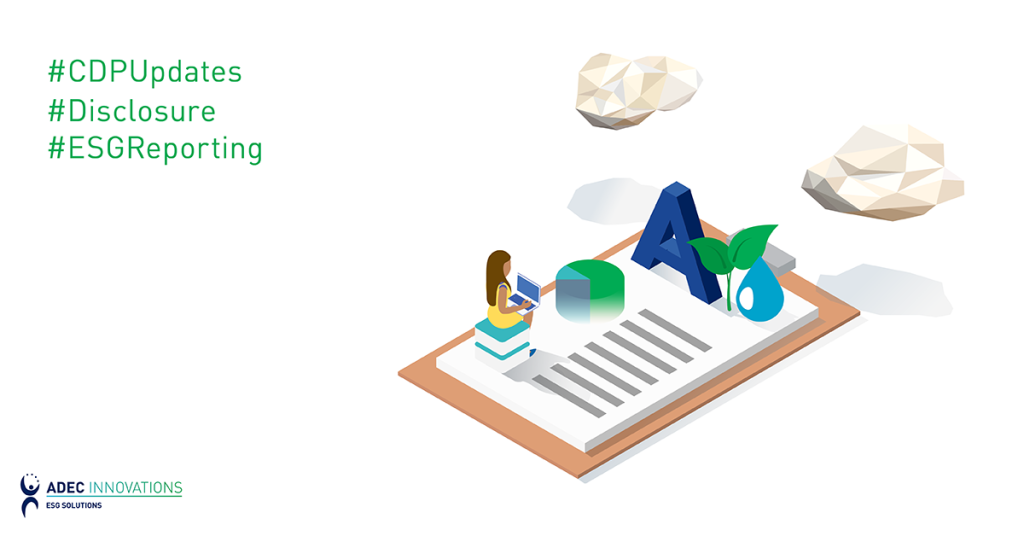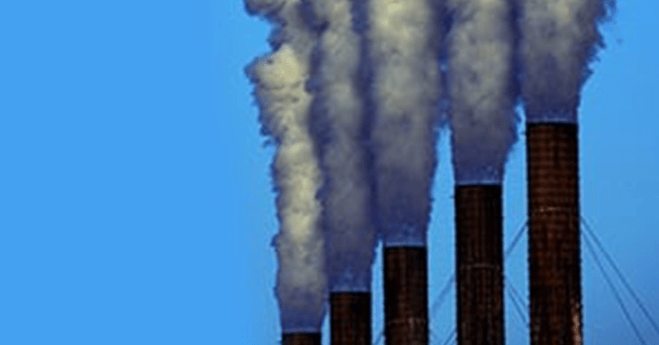2023 Year in Review

From new faces to new strategies, join the ADEC ESG team as we take a look back at how 2023 has opened new doors to a more sustainable world.
Building a Sustainable Workforce: Reimagining DEI through ESG

How can companies create meaningful, impactful DEI programs and avoid the pitfalls of some traditional programs?
Growing Trends: Greenhouse Gas Emission Verification

Verification of environmental data allows for a more accurate, targeted approach to reducing greenhouse gas emissions. In this article, we dive into what the verification process looks like, the principles behind verification standards, and how to choose the right standard for your organization.
ESG Market Drivers and Strategy Toolkit (ESG Professional Series Recap 2)

Parts 2 and 3 of our workshop series with USGBC-LA covered main ESG market drivers and introduced attendees to the course’s ESG strategy toolkit.
Environmental Science or Systems Science?

With more data comes greater expectation—and opportunity.
Prepping for Your CDP and ESG Success in 2022 (Webinar Recap)

Disclosing to CDP this year? Stay on top of the 2022 changes to CDP’s methodology with our latest webinar and hear what experts at ADEC ESG have to say.
2022 CDP Updates: Optimizing Your Response (Webinar Recap)

CDP is changing in 2022. What lies ahead for responding organizations? Two of our ESG disclosure and reporting experts sat down to discuss updates to CDP for this year and answer audience questions.
Beginning Your ESG Journey in Mauritius (Webinar Recap)

Joined by PL Consulting, Orison Legal, and more, we hosted a webinar on ESG in Mauritius and its surrounding regions. Check out a recap of part two below.
Go for Green: Aiming for Sustainability Indices

Many organizations are endangered by the unprecedented environmental risks that the world is experiencing today. As the world’s industries are affected by drought, heat stress and flooding, organizations are taking the necessary steps to mitigate climate risks.
Fighting for Clean Water with Water Stewardship

Over the past few years, businesses have started to see the implications that water-related risks have on their daily operations. The growing concern over water has reached policy-makers and non-governmental organizations around the world as they see the effects of water-related risks on cities and populations.
ESG: A Growing Interest for Business Investors

Many organizations are strategically choosing to become “greener” and socially responsible in their daily operations. Sustainability initiatives are serving to improve operational efficiency and are increasingly informing the purchasing decisions of customers and investors alike. Where competition between businesses is evident, companies are taking the necessary steps to stay ahead of their peers. Being environmentally sustainable and socially responsible is increasingly recognized as an essential element of corporate strategy, especially as regulations increase globally.
The “Greening” of the Food and Beverage Industry

As sustainability makes waves in the corporate world, members of the food and beverage industry have begun to follow suit and take the necessary steps to go green. A recent study by Ernst & Young shows that consumers are now more conscious and responsible when it comes to the products that they buy, especially the food they eat. As a result, more companies are appealing to a more health-conscious market by selling healthy, organic and sustainable goods to the community. The impact of climate change on the agriculture sector has also increased the pressure on the food and beverage industry to produce sustainable goods, even as the global population continues to grow. Food and beverage companies see the need to be sustainable in order to be more climate-resilient, since their operations are heavily dependent on the interaction of food, water and energy.
Plastic Bags: A Dangerous Convenience

Plastic bags are convenient and free to use, but their harmful impacts are finally being acknowledged. The use of plastic bags had been standard in many grocery and retail stores since the 1970s, but receiving a plastic bag for your purchased items is becoming increasingly rare in many cities.
Fashion Forward to Innovation with Sustainable Clothing

The fashion industry relies on creating new brands, new collections, and new product ranges every season to continuously drive growth and sales. According to a Deloitte report, season cycles have now shortened in the fashion industry, making major brands introduce new clothing styles almost every other week instead of the more traditional pace of every two seasons. This phenomenon has been dubbed “fast fashion,” which refers to the rapid production, consumption, and disposal of clothes every season. Major fashion brands use this business model due to its well-organized method of sourcing and production to help meet consumer demand for new styles at the right price.
Why ESG Integration is Good for Your Business

The need to fully integrate environmental, social, and governance (ESG) factors into business models is continuing to grow.
Finding Green Spaces in the Big Apple

In Southern California, there is ample open space where parks and other recreational areas are located. The urban space is reasonably horizontal and spread out with open areas for parking lots, big box retailers, parks, and other recreational areas such as soccer and baseball fields. There is a distinctive lack of tall buildings and dense development where I live, compared to other areas in the United States. When I visited New York for the first time, I was in awe of the height of buildings and the vertical density of development, which I was not accustomed to. This article takes a brief look at some open spaces located in New York— The High Line Park, Central Park, and Gotham Greens (a rooftop greenhouse)—that highlight the creative ways in which open space and nature are incorporated into an urban environment.
A Brief History of the Global Carbon Market

People all over the world are striving for a greener, more sustainable Earth. Regulators, governments and consumers are aware of the benefits of promoting sustainable practices. In doing so, a greater value is being placed not only on health and safety, but on the environment as well.
Water Stewardship: Charting the Next Frontier on Sustainability

The last few years have brought an understanding of the imminent pressure of water-related risks to businesses around the globe. Policy-makers and non-government organizations (NGOs) are also realizing the global concern of water-related risks as rising population counts, accompanied by the economic growth of emerging markets, continue to trigger the growing demand for potable water and food.
The Carbon Footprint of Technology

Given the current focus of the market on sustainability and environmental impact, it will be interesting to see how gadgets with even lesser environmental impacts will be produced by future innovations and technological advancements.
The Need to Optimize an Organization’s Supply Chain

The ability of a company to be sustainable is no longer an option: it has become a necessity. In doing so, organizations must learn to prioritize the optimization of their supply chain operations. Today, major organizations worldwide are utilizing sustainability measures to reduce their carbon emissions.
The UN Shines a Spotlight on the Environment and Sustainability

The UN Environment Programme (UNEP) works to assess, develop and strengthen worldwide institutions and programs that have a primary focus on sustainability.
Benchmarking Climate Change Performance Across Supply Chains

Supply chains are businesses’ lifeblood—they are the means through which products and services are created and delivered to the customer. Supply chains are where one can see how raw materials travel and transform into goods. They also reflect companies’ value chains, indicating cash outflow from costs of raw materials and resources along with profits from customers’ purchase of their products.
Hosting Monarch Butterflies in Your Yard

The choices that we make on a daily basis can have a profound effect on our environment. Recently, my mom hired a landscape architect to spruce-up a very drab side yard and turn it into a relaxing garden. She wanted to replace a patch of sod with an eclectic mix of stone, bark, flowering plants, a fountain, a decorative bench and a rocking chair. These are the things one would expect to find in a quaint little Italian style garden.
Achieve Environmental Sustainability in Style

There is no doubt that a large number of today’s world population takes into consideration the harmful impacts of their everyday socio-civic activities on the environment. The slowly diminishing natural resources due mostly to man-made errors have become a global issue that our world needs to address immediately. With this in mind, many organizations are now more conscious in their efforts to do their part in preserving our environment and its natural resources and, more importantly, lessen the carbon footprints they leave
Creating Resilient Cities Amidst Climate Change Risks

Businesses know the importance of sharing their environmental data; the collective information gathered helps bring about a solution towards mitigating climate change risks, lowering environmental impacts and increasing stakeholder confidence. The same premise applies to the cities where these businesses operate from and where employees of these businesses live.
Value Chain Assessments and Engagement: UK Businesses’ Preparation for International Climate Change Impacts

With almost 200 years’ experience in handling continuous modernization and industrialization, businesses, governments, and citizens of the United Kingdom (UK) are now working to ensure that economic growth is sustainable and securely meets the needs of future generations.
Sustainability Leaders: The Driving Force of an Organization’s Sustainability Program

Sustainability Leaders: The Driving Force of an Organization’s Sustainability Program
The Hunter and the Hunted: Lead Poisoning of Bald Eagles

Unless you reside near a large body of water or one of the North American coast lines, it is not often that you will encounter a bald eagle (Haliaeetus leucocephalus) soaring high overhead. Also known as the American Eagle, this magnificent bird of prey is the second largest on the North American continent, as well as our National symbol of freedom. In addition to their selective habitat, the bald eagle also continues to recover from prior forms of human caused endangerment and remains protected under the Lacey Law and the Migratory Bird Treaty Act.
NASCAR’s Sustainability

NASCAR has taken several steps to make the sport exactly that – more sustainable. This blog provides a glimpse into the steps NASCAR has taken to make the sport “greener.”
Join the Growing Supply Chain Trend on Voluntary Carbon Disclosure to CDP

The supply chain is definitely one of the top solutions a company uses to address the issue of climate change. However, as reported by CDP in its 2013-2014 CDP Supply Chain Program Research Initiative, reducing a supply chain’s greenhouse gas (GHG) emissions still remains to be a formidable challenge.